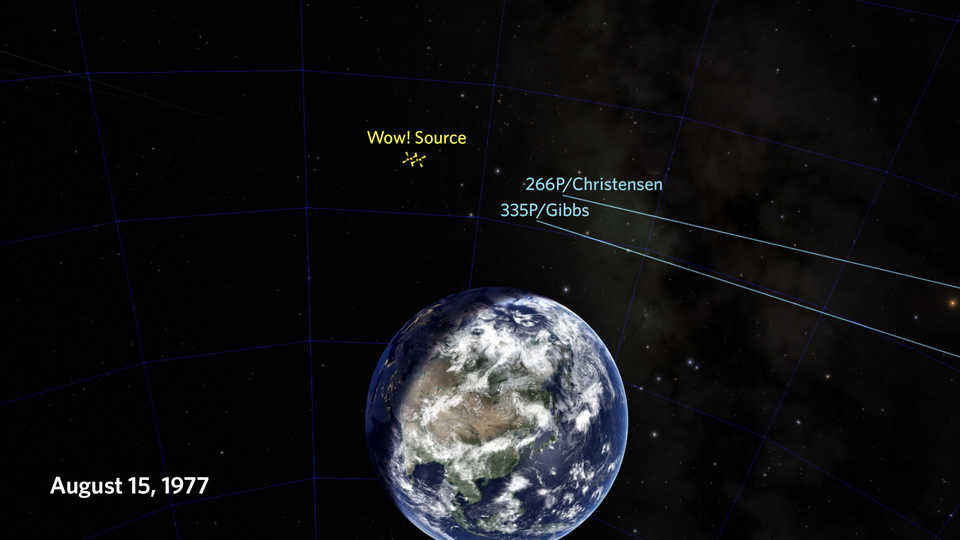Each month, renowned astronomers share their latest research at Morrison Planetarium.
Universe Update
Wow! Or Oops?

Was the Wow! Signal aliens? Maybe. Was it comets? Probably not. Was it comets 266P/Christensen and 335/Gibbs? Almost certainly not.
As we posted here recently, one of the most compelling stories in the search for extraterrestrial intelligence is the Wow! Signal, so named because its discoverer, Jerry R. Ehman, circled this anomalous narrowband radio burst with an exclaimed “Wow!” next to it. Detected in 1977 by the Big Ear Telescope in Ohio, no attempt to follow up on the mysterious signal that appeared to originate near the constellation of Sagittarius turned up any conclusive result.
Recently, St. Petersburg College adjunct professor Antonio Paris published a paper suggesting that clouds of hydrogen gas gravitationally dragged along with their parent comets could explain the signal. In his paper he points to the specific comets 266P/Christensen and 335P/Gibbs, then undiscovered, as being right at the location of the Wow! Signal on the day of its detection on August 15, 1977.
Although Paris’s paper passed peer review for the Journal of the Washington Academy of Sciences, it drew critical attention from astronomers, including Oxford University astronomer and Zooniverse founder Chris Lintott. He and others began to express concerns about the finding, summarizing their questions in a document Lintott tweeted earlier this week.
Not least of all: the numbers given in the paper for the position of the comets don’t add up! Although Paris cites the International Astronomical Union’s Minor Planet Center as the source for his position of the comets, and the comets do indeed pass quite close to the celestial location of the Wow! Signal in the sky, on the day of the signal according all data from NASA and the Minor Planet Center show the comets some 15 degrees away from the source of the signal. That’s too far away, even by Paris’s own estimates, to explain the signal.
Even if comets can be the source of such signals, “Wow!” was certainly not 266P/Christensen, nor 335P/Gibbs, and the mystery of the signal lives on.